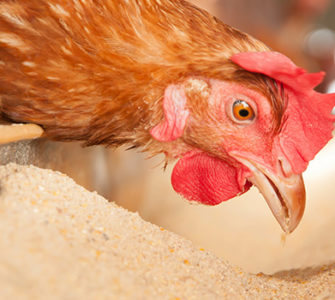Five federal bills seek to curb on-farm antibiotic use
Although FDA has introduced new guidelines for using feed antibiotics in poultry and livestock, some members of Congress would like the industry to go a few steps further. Following is a summary of five current federal bills seeking to restrict antibiotic use in food animals.
What’s your opinion? Tell Congress what you think. For contact information of your US senators and representatives, go to senate.gov and house.gov. Use the handy search tool in the upper right corner of each site.
1. Delivering Antimicrobial Transparency in Animals (DATA) Act
In February 2013, Rep. Henry Waxman (D-Calif.) and Rep. Louise Slaughter (D-N.Y.) introduced the DATA Act, which aims to provide more detail on the amount and use of antimicrobial drugs given to animals raised for food.
The stated purpose of the bill is to help public health officials and scientists “better understand and interpret trends and variations in antimicrobial resistance” and identify interventions for preventing and controlling drug resistance. It would require:
- Drug manufacturers to obtain and provide more information to the FDA on how their antimicrobial drugs are used in each class of food animals;
- Large-scale livestock producers to submit detailed annual reports to the FDA on the type and quantity of antibiotics contained in animal feed;
- FDA to provide breakdowns of drugs sold or distributed by species and by state, as well as whether the antibiotic was used therapeutically or for growth promotion.
2. Preservation of Antibiotics for Medical Treatment Act (PAMTA)
Last March — and for the fourth time since 2007 — Rep. Slaughter also introduced PAMTA, a bill that would ban non-therapeutic uses of medically important antibiotics in food-animal production.
The latest version of the bill has two updates:
- Inclusion of cephalosporins, bringing the total to eight classes of antibiotics that would be banned from non-therapeutic uses. Slaughter says she added cephalosporins in response to recent National Antimicrobial Resistance Monitoring System data showing an increase in resistant bacteria over the last decade, especially on chicken and turkey products.
- Clarification of what is considered non-therapeutic “to ensure that any use of medically important antibiotics outside of treatment of a sick animal is not permitted.”
3. Antimicrobial Data Collection Act
In May, Sen. Kristin Gillibrand (D-N.Y.) introduced legislation that would establish a research program to study the relationship between the sales, distribution and uses of antimicrobials in food-producing animals and antimicrobial resistance trends. The bill would also require:
- Additional reporting and publication of antibiotic sales data;
- Government Accountability Office study of FDA’s approaches to eliminating injudicious antimicrobial use in food-producing animals and the effectiveness of FDA’s data-collection activities regarding antimicrobial resistance.
4. Preventing Antibiotic Resistance Act
In June, Sen. Dianne Feinstein (D-Calif.) introduced the Preventing Antibiotic Resistance Act of 2013, which directs FDA to prohibit the non-therapeutic use of medically important antibiotics in feed and water. Specifically, the bill would:
- Direct FDA to prohibit the use of medically important antibiotics in ways that allegedly “accelerate antibiotic resistance”;
- Require drug companies and food-animal producers to demonstrate they are using medically important antibiotics to treat clinically diagnosable diseases, not exclusively for growth promotion;
- Preserve the ability of veterinarians and producers to use all available antibiotics to treat sick animals.
5. Strategies to Address Antimicrobial Resistance (STAAR) Act
Also in June, Rep. Jim Matheson (D-Utah) re-introduced legislation aimed at addressing the issue of antibiotic resistance. The STAAR Act of 2013, previously introduced in 2009, would establish the Antimicrobial Resistance Task Force, including an external advisory board and an Office of Antimicrobial Resistance, reporting to the Secretary of Health and Human Services. The advisory board would be charged with collecting data to allow the government to assess the antimicrobial resistance problem. The scope of the bill includes human and animal antibiotics.
In addition to these federal bills, there are several bills concerning on-farm antibiotic usage before the state legislatures in Maryland, Minnesota, North Carolina, New York and Pennsylvania.
Posted on February 13, 2014
















